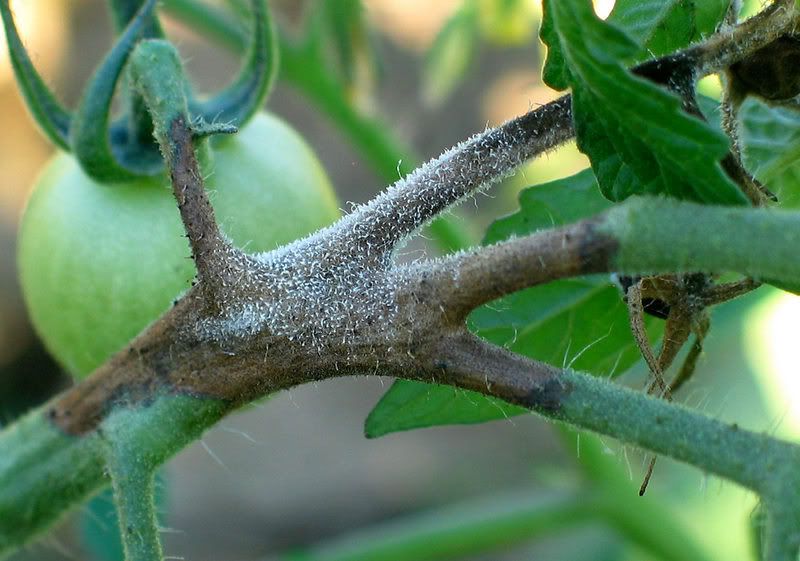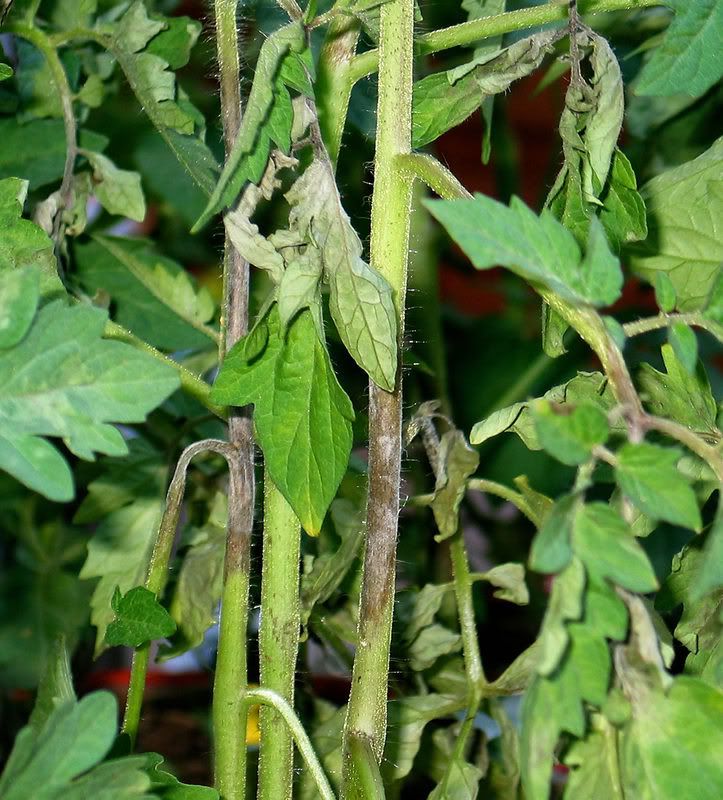

|
Information and discussion regarding garden diseases, insects and other unwelcome critters.
|
 |
|
|
Thread Tools | Display Modes |
|
|
#1 |
|
Tomatovillian™
Join Date: Apr 2007
Location: Campbell, CA
Posts: 4,064
|
This from Love Apple Farm tonight:
Late Blight in California  Signs to Look for:
 Raybo 
|
|
|

|
|
|
#2 |
|
Tomatovillian™
Join Date: Dec 2010
Location: Sunol, CA
Posts: 2,723
|
Did you tear up Love Apple's plants?
|
|
|

|
|
|
#3 |
|
Tomatovillian™
Join Date: Apr 2007
Location: Campbell, CA
Posts: 4,064
|
|
|
|

|
|
|
#4 |
|
Moderator Emeritus
Join Date: Jan 2006
Location: Upstate NY, zone 4b/5a
Posts: 21,169
|
Ray, those of us here in the NE as well as those in the PNW have had a lot of experience with Late Blight ( P. infestans) and while Cynthia said that copper based sprays can be preventative, and yes, I know they are approved organic, when faced with total death and destruction of plants I really do think that it might be warranted to consider Daconil as a preventative.
There are no cures. And if you read the two excellent websites from Cornell you'll also see that light infections can sometimes be controlled. Yes, I know that Daconil is not organic but it is very effective as a preventative b'c it blocks the attachment sites on the upper leaf so that the fungal pathogens can't attach. My own view is that I don't care if a product is organic or synthetic, what I care about is tolxicity to humans, pets and the environment. And some products that are organic can be more toxic than some that are organic. Rotenone is more toxic than is Daconil and yes is approved by most organic certifying agencies. Daconil can be sprayed up to the day of harvest which alone tells you that the toxicity is low as compared to some other products. I guess what it comes down to is a personal philosophy that demands that only organic products will be used as opposed to losing all the tomato plants that one has out there. An additional concern is that in colder areas the LB spores are killed over the winter as associated with dead tomato tissue but in warmer areas, such as you folks in mid- to southern areas, that wouldn't apply. LB can only exist on live vegetative parts of tomato and potato plants and a few more crops. Here in the NE they can remain in potatoes that are found in what are called cull piles and then can be and have been a new source for LB infections the next year. Hope that helps.
__________________
Carolyn |
|
|

|
|
|
#5 |
|
Tomatovillian™
Join Date: Apr 2007
Location: Campbell, CA
Posts: 4,064
|
Hi Carolyn,
Yes, your additional information is very helpful (as always).  It would be a real shame if indeed Late Blight has descended upon the Central Valley of California, as this area produces such large amounts of vegetables that feed the rest of the Country so much of the year. All we home gardeners can do now is to be extra vigilant, and immediately yank any plants with suspect infections - then dispose of them properly. Raybo 
|
|
|

|
 |
|
|
